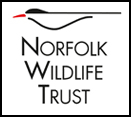PRESS RELEASE : NWT reaction to conditional support for Western Link road [May 2020]
The press release issued by Norfolk Wildlife Trust on 18 May 2020.
Norfolk Wildlife Trust is dismayed to learn that central government support has been given to the Western Link road for the Northern Distributor Road (NDR).
The planned road will link the end of the current NDR on the A1067 with the A47 near to Easton. The landscape here is a well-connected network of habitats that are important for wildlife, including ancient woodlands, grasslands and floodplains. NWT is very concerned about the potential damage by the Western Link to these important habitats and their connectivity.
The Department for Transport (DfT) gave conditional support for Norfolk County Council’s plans for the 3.8-mile Norwich Western Link road on Friday 15 May 2020 as part of its Large Local Majors funding programme. Despite the backing, the road will still need to secure planning permission and no funding has been allocated for the project. But the support does gives the council the green light to proceed to the next stage of the process.
Chief Executive of Norfolk Wildlife Trust, Pamela Abbott said:
“This decision should not have been made before it can be shown that the likely significant biodiversity impacts will be addressed. We will be looking closely at the information from wildlife surveys that the council is gathering this spring, and will then write to the Department for Transport stressing that it is vital that specific habitat requirements of all wildlife along the route are assessed. We will also attend the future public inquiry to make the case for nature.”
Acting Head of People and Wildlife at Norfolk Wildlife Trust, John Hiskett said:
“We estimate that the western link road will include the permanent loss of between three and four hectares of woodland. The mature trees in this woodland provide features such as holes and bark gaps, which form a key roosting habitat for the local bat population. The rarity of the species present means that these areas of woodland, along with the whole complex of woodland habitats, in the vicinity of the proposed route are likely to be of national importance.
“It is very likely that the newly created habitat that is proposed in its place will not be of sufficient quantity or quality to support bats and other wildlife displaced from the areas lost to the road. This is exacerbated by the loss of habitat connectivity that will inevitably occur, particularly in the light of the growing evidence from other road schemes that alternatives such as bat bridges, as currently designed, are rarely effective.”



